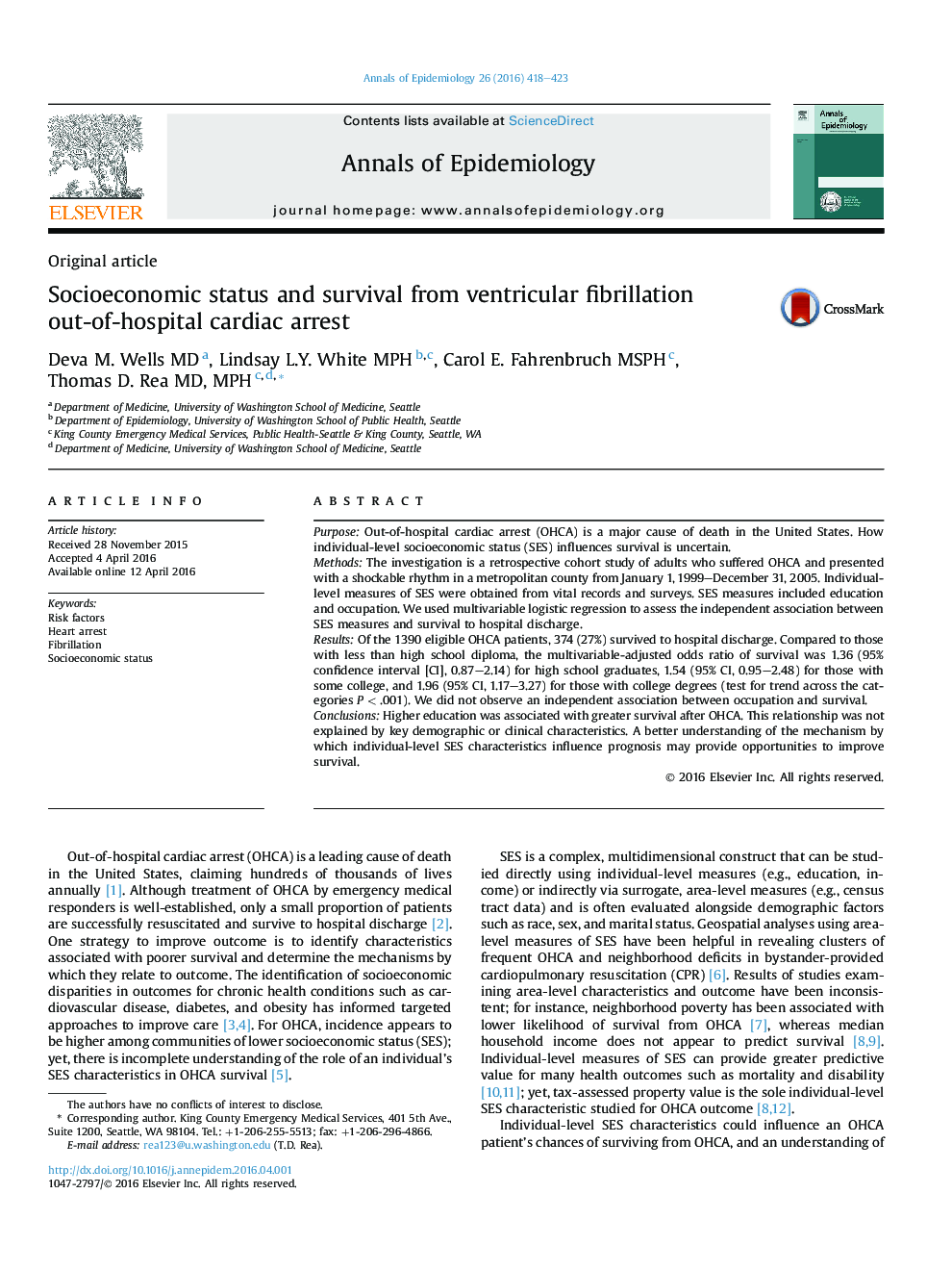| Article ID | Journal | Published Year | Pages | File Type |
|---|---|---|---|---|
| 6147743 | Annals of Epidemiology | 2016 | 7 Pages |
PurposeOut-of-hospital cardiac arrest (OHCA) is a major cause of death in the United States. How individual-level socioeconomic status (SES) influences survival is uncertain.MethodsThe investigation is a retrospective cohort study of adults who suffered OHCA and presented with a shockable rhythm in a metropolitan county from January 1, 1999-December 31, 2005. Individual-level measures of SES were obtained from vital records and surveys. SES measures included education and occupation. We used multivariable logistic regression to assess the independent association between SES measures and survival to hospital discharge.ResultsOf the 1390 eligible OHCA patients, 374 (27%) survived to hospital discharge. Compared to those with less than high school diploma, the multivariable-adjusted odds ratio of survival was 1.36 (95% confidence interval [CI], 0.87-2.14) for high school graduates, 1.54 (95% CI, 0.95-2.48) for those with some college, and 1.96 (95% CI, 1.17-3.27) for those with college degrees (test for trend across the categories PÂ <Â .001). We did not observe an independent association between occupation and survival.ConclusionsHigher education was associated with greater survival after OHCA. This relationship was not explained by key demographic or clinical characteristics. A better understanding of the mechanism by which individual-level SES characteristics influence prognosis may provide opportunities to improve survival.
